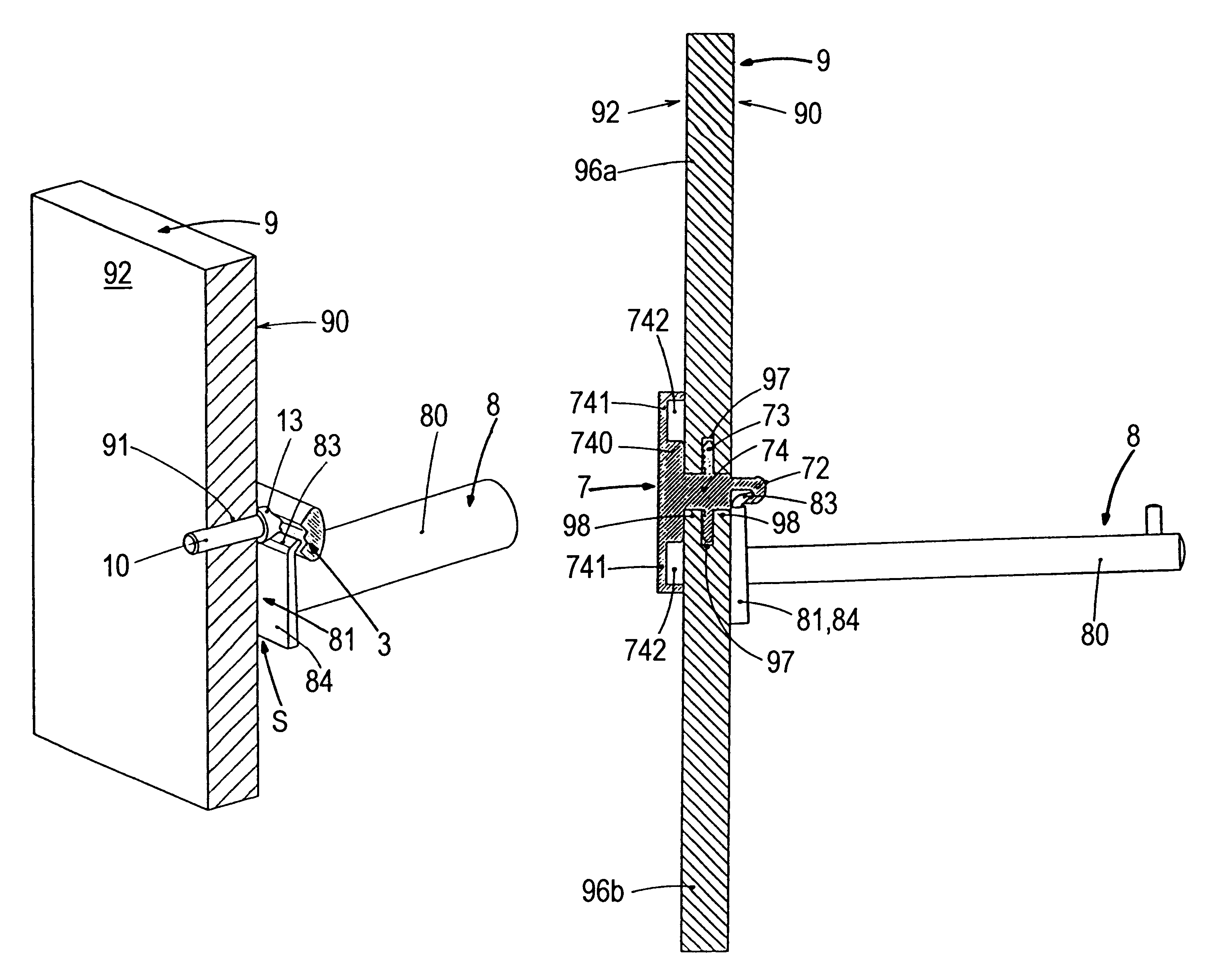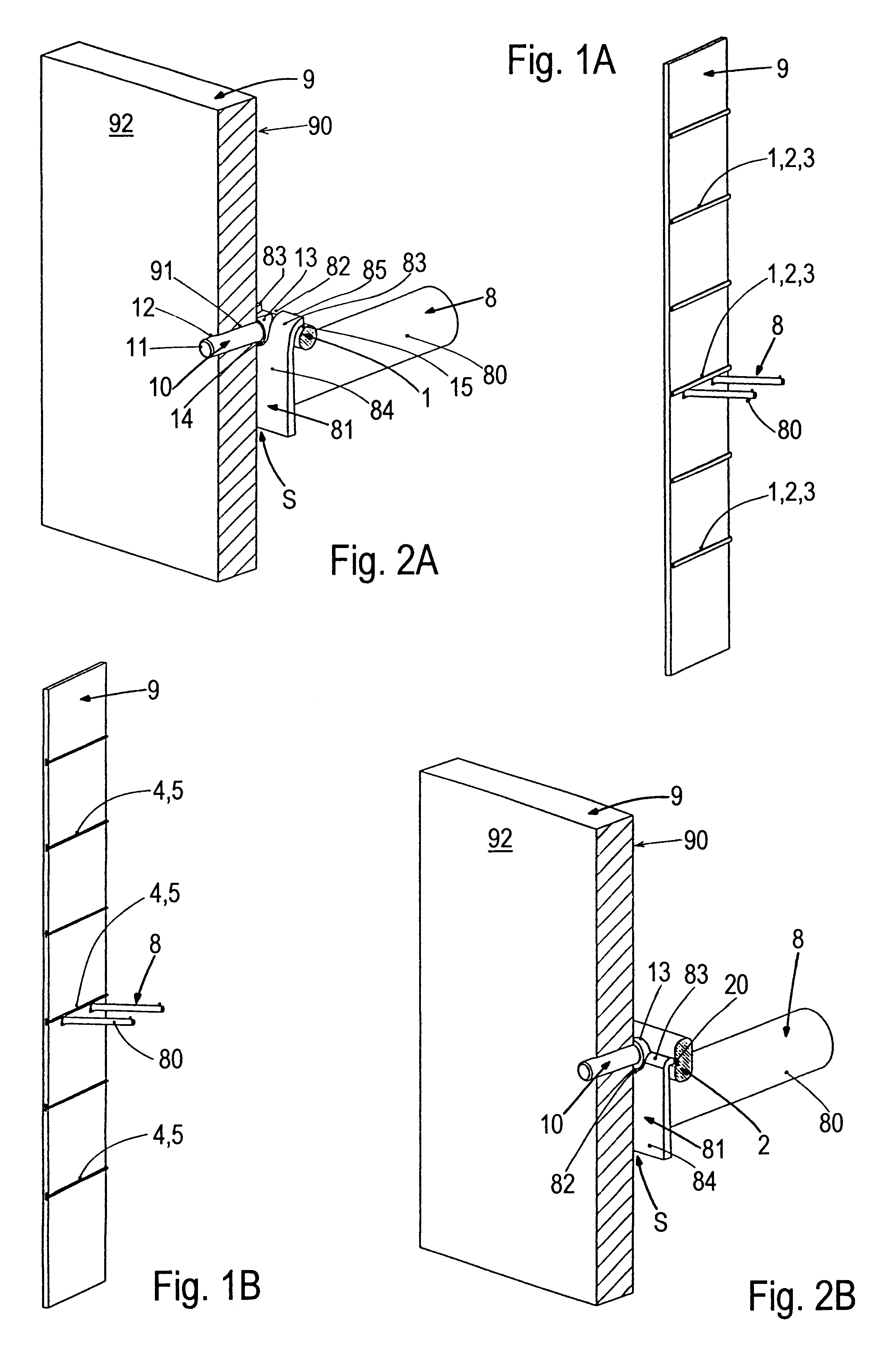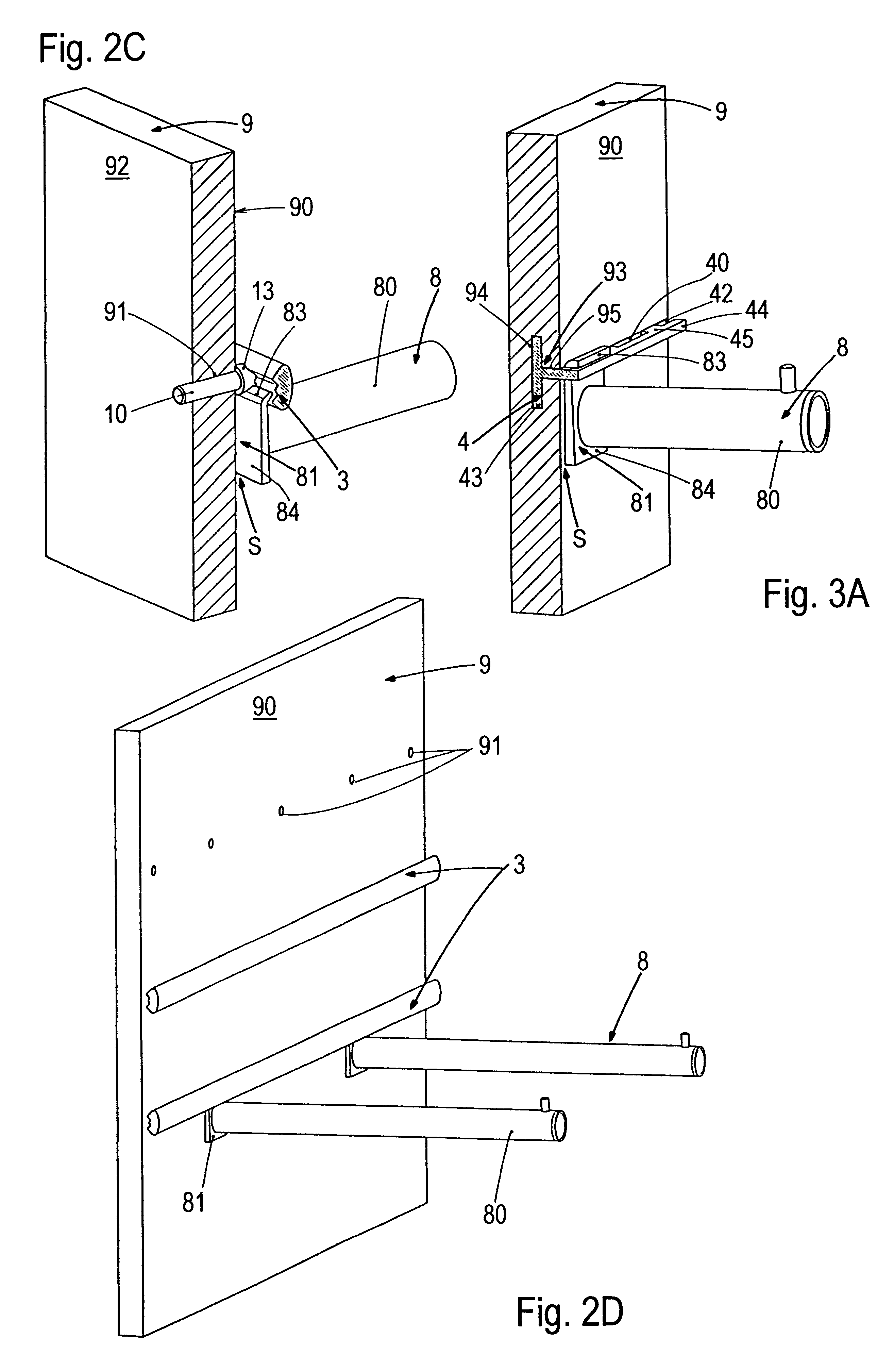Display device for presentation of goods
a technology for displaying devices and goods, applied in the field of display devices, can solve the problems of not meeting every aesthetic requirement, not visually advantageous, and the bulkyness of rods and hangers, and achieve the effects of stable support capability, rapid change, and low cos
- Summary
- Abstract
- Description
- Claims
- Application Information
AI Technical Summary
Benefits of technology
Problems solved by technology
Method used
Image
Examples
first embodiment
In the display device the shaped rod 1, which is placed onto the front side 90 of the supporting structure 9, has a round cross section. A plurality of bolts 10 which lie in a plane and protrude through through-holes 91 present in the supporting structure 9 extend perpendicularly from the longitudinal axis of the shaped rod 1. An external thread 12 is preferably provided on the free bolt end 11 so that a nut (not shown) can be screwed from the rear side 92 of the supporting structure 9 onto the protruding-through bolt end 11 for the purpose of fastening the shaped rod 1. Arranged opposite the free bolt end 11 is a thickened portion 13 which results in an annular shoulder 14 facing the free bolt end 11. The thickened portion 13 can be produced by a corresponding design of the bolt 10 or by a spacer sleeve pushed onto the bolt 10. The shoulder 14 has a larger external diameter than the through-hole 91 and is therefore placed on the front side 90 of the supporting structure 9 so that t...
second embodiment
The second embodiment is different from the preceding figure only with regard to the cross section of the shaped rod 2, a plug-in groove 20 provided therein, the bending of the tongues 83 and the engagement of the tongues 83 into the plug-in groove 20. The shaped rod 2 has an oval cross section in principle, but only constitutes an alternative to the round shaped rod 1 and is otherwise insignificant. The shaped rod 2 could also have a round cross section. The essential feature is the axial plug-in groove 20 which faces the front side 90, runs along the shaped rod 2 and extends horizontally into the shaped rod 2. The indentation 82 on the plug-in plate 81 is less deep and the bending radius in which the tongues 83 are turned towards the rod part is smaller. In this case, the tongues 83 are in principle bent away at right angles so that the tapering-off parts of the tongues 83 have a horizontal alignment.
In the fitted state the plug-in plate 81 is again situated in the gap spacing S, ...
third embodiment
The third embodiment again has a cross-sectionally differently contoured shaped rod 3 and different bending of the tongues 83. The shaped rod 3 is approximately oval in cross section and on the side which faces the front side 90 of the supporting structure 9 has at least one oblique surface 30 which extends longitudinally axially of the shaped rod 3 and ascends from the lower half of the shaped rod 3 towards the horizontal central axis M of the shaped rod 3 at a pitch angle .alpha.. A further oblique surface 31 is preferably provided, this surface descending from the upper half of the shaped rod 3 towards the horizontal central axis M of the shaped rod 3 at a pitch angle .alpha.. Only the lower oblique surface 30 is required for the fitting of the supporting arms 8. The symmetrical arrangement of the oblique surfaces 30,31 makes it possible also to place the shaped rod 3 turned through 180.degree. onto the front side 90 of the supporting structure 9 so that then the oblique surface ...
PUM
 Login to View More
Login to View More Abstract
Description
Claims
Application Information
 Login to View More
Login to View More - R&D
- Intellectual Property
- Life Sciences
- Materials
- Tech Scout
- Unparalleled Data Quality
- Higher Quality Content
- 60% Fewer Hallucinations
Browse by: Latest US Patents, China's latest patents, Technical Efficacy Thesaurus, Application Domain, Technology Topic, Popular Technical Reports.
© 2025 PatSnap. All rights reserved.Legal|Privacy policy|Modern Slavery Act Transparency Statement|Sitemap|About US| Contact US: help@patsnap.com



